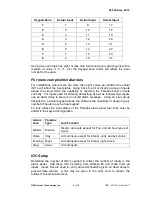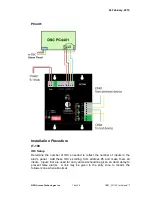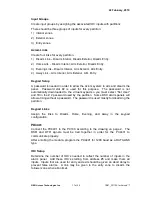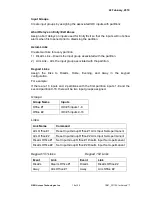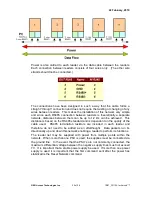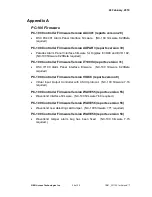
24 February, 2010
RBH Access Technologies Inc.
20 of
26
TB61_PC-
100 for AxiomV™
NC100 Firmware Version
Version 760 (or higher) is required for use of wavetrend readers. Selecting the
72-bit WTND format for an access point will enable the use of the long-range
readers and credentials.
The NC100 firmware has been designed to ignore the continuous stream of card
data from the wavetrend readers unless the card has moved from one zone to
another. A special buffer has been reserved
to store ID‟s along with a timer and
RSSI value. The timer is refreshed on every transaction for each card in the
buffer. If the timer times out the card will be reported as missing. The extended
unlock time is used as the value for this timer. A value of 60 seconds works well
with 10 credentials.
RSSI Values
The RSSI value is the Received Signal Strength Indicator. This value ranges
from 50 to 255 depending upon how close the card is to the reader and how the
reader is set up.
If a reader has an antenna attached, the RSSI value of a card 3 meters away will
be around 100. Without an antenna the same card will report around 60.
The RSSI value is displayed in the AXIOM cards monitor screen. This can be
used to adjust the RSSI threshold so that the zone area can be limited to a
particular distance.
RSSI Threshold
The DHO warning time is used as the RSSI threshold value. To use a value
greater than 127 select minutes and calculate adding 128 to the value. As an
example: to achieve an RSSI value of 140, set the time to minutes and use a
value of (140
– 128) 12. The received RSSI value will be displayed in the AXIOM
V cards monitor.
RSSI Background Messages
A credential will transmit its ID every 1.5 seconds. This message is translated
into an RC-2 style 72-bit wiegand style message by the PC100. Part of the
message contains the RSSI value of the card. Whenever the value of the RSSI
for a particular card has changed by more than the
Unlock Time
the message will
be transmitted. To prevent moving targets from swamping the C-NET with
unnecessary background messages the unlock time should be set to above 60.
For stationary credentials and during installation this value may be lowered.
Card Missing Timer
The
Extended Unlock Time
(EUT) is used as the “card missing” timer. If the EUT
is set to 0 a default value of 60 seconds will be used. Once a card has been
received and placed into the buffer, the timer will be decremented every second.
When the timer times out an “Access Denied – Missing Card” log message will
be recorded.




